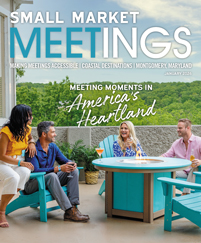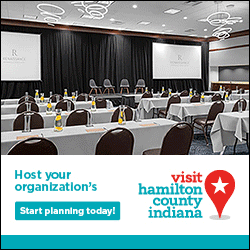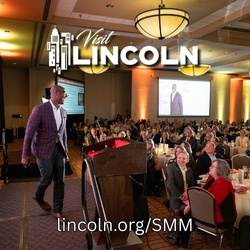Elizabeth Davis Peeler has traveled to numerous sites that look perfect on paper. But once she got there — whether it was decor or resources or the surrounding area — it “turned out to be an absolute mismatch.”
And vice versa. She once visited a venue that didn’t look great on paper but ended up being a perfect fit. What looked like disjointed flow on the floor plan turned out to be an ideal place to put exhibitors, and “I was able to visualize how to use it,” said Peeler, owner and lead planner of D-P Planning Meetings and Events.
Virtual site visits, which have become necessary during the pandemic, can be hugely useful to short-list properties or follow up on issues or if the client is on a tight budget. But virtual visits aren’t likely to replace in-person site inspections.
“I always feel it’s worthwhile to travel for a site inspection,” Peeler said. “There’s so much you can get from seeing it in person that you can’t get from the internet or from a brochure.”
Planners can get even more from site visits by scheduling multiple properties during one trip. Even if a hotel or venue isn’t right for one event, it may be perfect for another conference, or you can add it to your inventory for future meetings — or cross it off the list.
Before You Go
Site visits, of course, start long before you walk through the door. They start by contacting a CVB or DMO about the destination’s available product and narrowing down possible properties through an RFP.
Mary-Margaret Armstrong, president and managing director of Meeting Advantage, LLC, will often reach out to her network to see if other planners have recently booked the property. If someone she trusts recommends a venue, Armstrong will let her client decide whether to book the venue sight unseen or book plane tickets to visit the destination.
Before going, she also recommends digging into some of the venue’s contract non-negotiables — like attrition or cancellation versus rebooking, which could be deal breakers — or putting it on a soft hold to see a copy of the contract.
“Do not take your client into a place where they’re going to fall in love with it, and you’re up against a wall because you can’t negotiate based on the fact that you never even looked at a contract,” she said. “You need to know what you’re going into.”
From the Eyes of an Attendee
The best way to start a site inspection is the same way an attendee would start: by walking into the lobby, said Julie Krueger, sourcing and contracting manager for meetings and events at Land O’Lakes. What is the feel when the attendee arrives? How long does it take for someone to greet you? Where would the registration desk go? Attendees will be arriving after long flights or drives, sometimes with luggage; they don’t want to search for a registration desk in some out-of-the-way room.
“If they’re coming in, they’re hungry and tired from traveling, and then if they’re frustrated with their check-in, you’ve already started off the program badly,” Krueger said.
Planners should always walk the property with the attendee perspective in mind. How far are the guest rooms from the meeting space? How does the space flow? It may not look far on the diagram, “but my feet are hurting,” Armstrong said.
If the hotel is spread out, ask if you can book a block of rooms that’s close to the meeting space or areas where most group events will take place, Krueger said.
Planners should also consider the overall feeling and flow of the space, from elevator locations to proximity of restrooms, even down to things like decor. One venue Peeler visited had decor that was a bit R-rated, which she knew wouldn’t fly with her group.
Consider the venue beyond the walls. If a group will have a lot of free time or if attendees are on their own for some meals, make sure the venue is in a safe, walkable area close to restaurants and entertainment.
Planners should even consider the attendee experience before the lobby. A 30-minute drive from the airport to the venue could offer beautiful scenery or it could take attendees through a decrepit, dirty part of the city.
“Having that experience and not just looking at a map is huge,” Krueger said.
Plan for the Minority
Knowing what to look for starts with knowing your attendees and the overall goals of the program. That includes the usual suspects, like parking — whether it’s nearby or blocks away, free or paid — motorcoach accessibility, audiovisual, columns, free Wi-Fi and sufficient bandwidth to support the group’s usage. One of Peeler’s groups does online training, so they need more bandwidth as well as power outlets in the floor. If she has to run power from the wall, that adds labor costs and creates trip hazards.
Some groups have a lot of smokers who will need a nearby, easy-to-reach smoking area. A group with breastfeeding mothers may need a nursing room, and some organizations prefer unisex bathrooms. For one of Krueger’s agricultural programs, many attendees drive in, and most drive big pickup trucks, “so we have to look at parking height clearances,” she said. Armstrong once organized an international meeting that had a lot of attendees who needed a place to pray during the day, so they set up a prayer room.
Meeting planners typically think in majority terms, but if you think in minority terms during a site visit, it will help ensure that everyone in your group is accommodated, Armstrong said.
Easy To Overlook
Armstrong also recommends perusing site visit checklists online to get ideas of “weird” things to look for “that aren’t going to jump out at you.”
Krueger always likes to look at the back of the house, especially if it’s an older property, to know the location of service corridors and storage areas because noise from crash carts or other hotel activity could affect the program.
Logistics like loading docks and freight elevators can affect your ability to set up or break down on schedule. Consider how accessible the loading dock is and how much traffic the dock is already handling. Ask if exhibitors or vendors can come through the front door and whether the venue has dollies and carts for them to use. Make sure there are enough elevators to move people and equipment. Once, Peeler’s group was moving out when another group was moving in, all sharing one big freight elevator, and “we were trying to orchestrate that so our group would be out by the end of our contracted period.”
Ethics and Etiquette
Unfortunately, some planners request site visits to be wined and dined, entertained and indulged. Planners should schedule site inspections only if they have legitimate, prospective business with the property, and they should approach hotel freebies with similar restraint: Don’t take the offered massage unless you know your group will likely use the spa; don’t ask for a round of golf unless your attendees plan to golf. For overnight stays, it’s probably fine to accept one meal, but don’t expect the hotel to provide all meals, Krueger said.
Give the sales rep your itinerary, and make sure to swap cellphone numbers. Try to stay on schedule, which may be challenging when visiting multiple sites, but always stay in touch.
Planners should also be transparent with the property, “just letting them know how good of a chance they really do or don’t have,” Peeler said.
“Personally, if I know the hotel really doesn’t have a shot, I’m not going to be asking them to put me or my client up for the night.”












